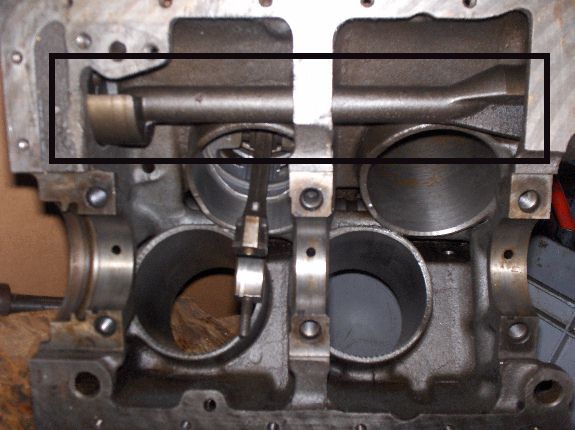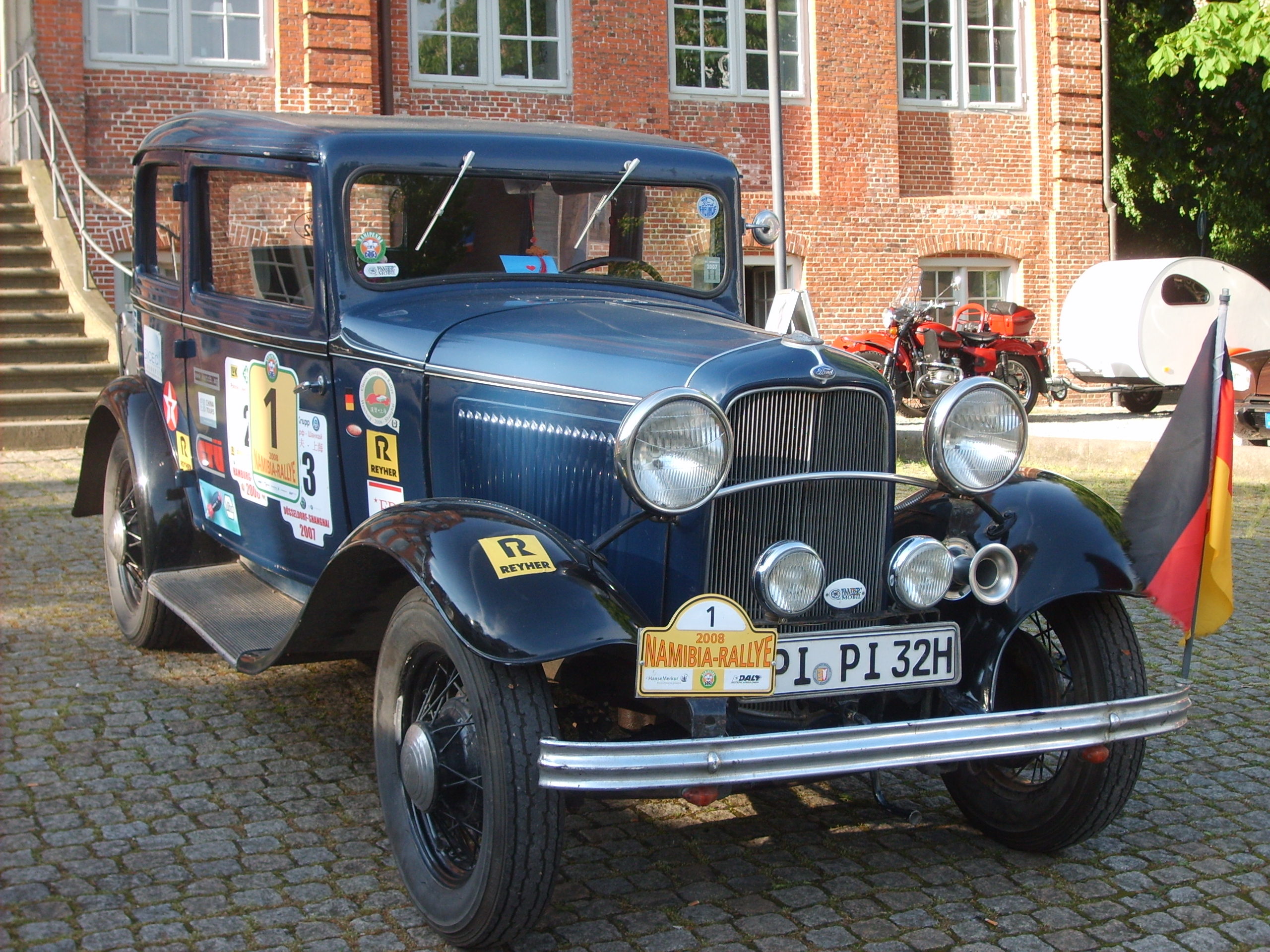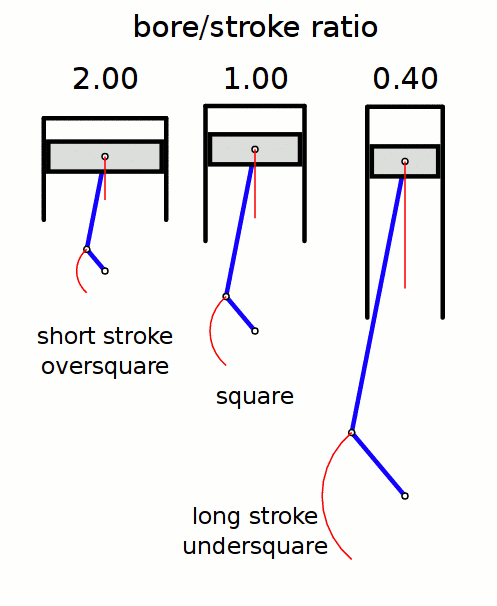|
Ford Essex V4 Engine
The Essex V4 is a V4 petrol engine manufactured by the Ford Motor Company from 1965 to 1977. The engine was available in both 1.7 L and 2.0 L capacities. Designed by Ford of Britain, the Essex V4 was produced at a plant in Dagenham, originally in the county of Essex, later part of East London. The engine was used in the Ford Corsair, Capri Mk I, Consul/Granada Mk I, Ford Zephyr Mk IV and the Ford Transit Mk I van. History Development of the Essex engine family began in 1961. While design of the new engine would be handled by engine design director Alan Worters and a team consisting of Alan Aitken, John Pask, and George Soule, a product planning team would also be involved. The first product strategy meeting was chaired by Ford product planning manager Terence Beckett. Philip Ives was manager of a new engine and transmissions planning department. The project's goal was to produce an engine suitable for use in both passenger cars and work vans, with marine and i ... [...More Info...] [...Related Items...] OR: [Wikipedia] [Google] [Baidu] |
Ford Motor Company
Ford Motor Company (commonly known as Ford) is an American multinational automobile manufacturer headquartered in Dearborn, Michigan, United States. It was founded by Henry Ford and incorporated on June 16, 1903. The company sells automobiles and commercial vehicles under the Ford brand, and luxury cars under its Lincoln luxury brand. Ford also owns Brazilian SUV manufacturer Troller, an 8% stake in Aston Martin of the United Kingdom and a 32% stake in China's Jiangling Motors. It also has joint ventures in China (Changan Ford), Taiwan (Ford Lio Ho), Thailand ( AutoAlliance Thailand), and Turkey ( Ford Otosan). The company is listed on the New York Stock Exchange and is controlled by the Ford family; they have minority ownership but the majority of the voting power. Ford introduced methods for large-scale manufacturing of cars and large-scale management of an industrial workforce using elaborately engineered manufacturing sequences typified by moving assembly lines; by ... [...More Info...] [...Related Items...] OR: [Wikipedia] [Google] [Baidu] |
Ford Capri
The Ford Capri is a fastback coupé built by Ford of Europe, designed by Philip T. Clark, who was also involved in the design of the Ford Mustang. It used the mechanical components from the Mk2 Ford Cortina and was intended as the European equivalent of the Ford Mustang. The Capri went on to be highly successful for Ford, selling nearly 1.9 million units in its lifetime. A wide variety of engines were used in the car throughout its production lifespan, which included the ''Essex'' and ''Cologne'' V6 at the top of the range, while the ''Kent'' straight-four and ''Taunus'' V4 engines were used in lower-specification models. Although the Capri was not officially replaced, the second-generation Probe was effectively its replacement after the later car's introduction to the European market in 1994. While Ford marketed the car as "Ford Capri – The Car You Always Promised Yourself", the British magazine '' Car'' described the Capri as a "Cortina in drag". History Fo ... [...More Info...] [...Related Items...] OR: [Wikipedia] [Google] [Baidu] |
Ford Taunus V4 Engine
The Ford Taunus V4 engine is a 60° V4 piston engine with one balance shaft, introduced by Ford Motor Company in Germany in 1962. The German V4 was built in the Cologne plant and powered the Ford Taunus and German versions of the Consul, Capri, and Transit. Design In common with other V4 and V6 engines, but unlike longer V engines with more cylinders, the connecting rods do not share a crankpin on the crankshaft. The V4 was later expanded into the Ford Cologne V6 engine that was used in the Ford Capri, Ford Taunus, Ford Cortina, Ford Consul, Ford Granada, Ford Sierra, Ford Scorpio, Ford Ranger, Ford Explorer, Ford Mustang, Mercury Capri, and many other cars. The V4 engine was also used in industrial applications: pumps, electrical generators, agricultural machinery and snowcats. In automobiles, the Taunus V4 was replaced by the Ford OHC/Pinto engine. Initially the V4 engine was designed by Ford for a new entry compact car intended for the US market to be called the Ford "Car ... [...More Info...] [...Related Items...] OR: [Wikipedia] [Google] [Baidu] |
Ford Of Germany
Ford-Werke GmbH is a German car manufacturer headquartered in Niehl, Cologne, North Rhine-Westphalia. It is a subsidiary of Ford Motor Company, which operates two large manufacturing facilities in Germany, a plant in Cologne and a plant in Saarlouis. Berlin origins The earliest presence of the Ford Motor Company in Germany was a parts operation set up in Hamburg in 1912. At the end of 1924 the US Ford Motor Company established a sales office in Berlin which at the start of 1925 received a permit to import 1,000 tractors. In 1920 the government had imposed a tariff so high that it amounted to a prohibition against importing foreign automobiles, but this was reversed in October 1925. The move had evidently been anticipated by Ford, since on 18 August 1925 the ''Ford Motor Company Aktiengesellschaft'' had been entered in the Berlin Companies Register.Oswald, p 411 During 1925 an assembly plant was constructed in a rented warehouse in the Westhafen (western port) district of ... [...More Info...] [...Related Items...] OR: [Wikipedia] [Google] [Baidu] |
Spark Plug
A spark plug (sometimes, in British English, a sparking plug, and, colloquially, a plug) is a device for delivering electric current from an ignition system to the combustion chamber of a spark-ignition engine to ignite the compressed fuel/air mixture by an electric spark, while containing combustion pressure within the engine. A spark plug has a metal threaded shell, electrically isolated from a central electrode by a ceramic insulator. The central electrode, which may contain a resistor, is connected by a heavily insulated wire to the output terminal of an ignition coil or magneto. The spark plug's metal shell is screwed into the engine's cylinder head and thus electrically grounded. The central electrode protrudes through the porcelain insulator into the combustion chamber, forming one or more spark gaps between the inner end of the central electrode and usually one or more protuberances or structures attached to the inner end of the threaded shell and designated the ' ... [...More Info...] [...Related Items...] OR: [Wikipedia] [Google] [Baidu] |
Combustion Chamber
A combustion chamber is part of an internal combustion engine in which the fuel/air mix is burned. For steam engines, the term has also been used for an extension of the firebox which is used to allow a more complete combustion process. Internal combustion engines In an internal combustion engine, the pressure caused by the burning air/fuel mixture applies direct force to part of the engine (e.g. for a piston engine, the force is applied to the top of the piston), which converts the gas pressure into mechanical energy (often in the form of a rotating output shaft). This contrasts an external combustion engine, where the combustion takes place in a separate part of the engine to where the gas pressure is converted into mechanical energy. Spark-ignition engines In spark ignition engines, such as petrol (gasoline) engines, the combustion chamber is usually located in the cylinder head. The engines are often designed such that the bottom of combustion chamber is roughly in l ... [...More Info...] [...Related Items...] OR: [Wikipedia] [Google] [Baidu] |
Ford Essex V6 Engine (UK)
The Ford Essex V6 engine is a 60° V6 engine built between 1966 and 1988 by the Ford Motor Company in the United Kingdom and until 2000 in South Africa although mostly in the Ford engine plant of Dagenham, Essex, which gave the engine its name. It is closely related to the Ford Essex V4 engine produced in displacements of 1.7 L and 2.0 L. Both engines share many parts since the Essex V6 was directly derived from the Essex V4; the 2.0 L Essex V4 and the 3.0 L Essex V6 in fact have exactly the same bore and stroke and share various components. History The Essex V4 and V6 were mainly designed to replace the outdated and ageing inline-four and six-cylinder Ford Zephyr engines. It was produced in four capacities: , , , , with the 3.0-litre version being the most common and widely used. These engines were fitted to a wide range of vehicles, from Ford Transit vans to sedans, coupés like the Ford Capri and sports cars like TVRs and Marcos. The earlier versions of engine were rated ... [...More Info...] [...Related Items...] OR: [Wikipedia] [Google] [Baidu] |
Stroke Ratio
In a reciprocating piston engine, the stroke ratio, defined by either bore/stroke ratio or stroke/bore ratio, is a term to describe the ratio between cylinder bore diameter and piston stroke length. This can be used for either an internal combustion engine, where the fuel is burned within the cylinders of the engine, or external combustion engine, such as a steam engine, where the combustion of the fuel takes place ''outside'' the working cylinders of the engine. A fairly comprehensive yet understandable study of stroke/bore effects was published in ''Horseless Age'', 1916. Conventions In a piston engine, there are two different ways of describing the ''stroke ratio'' of its cylinders, namely: ''bore/stroke'' ratio, and ''stroke/bore'' ratio. Bore/stroke ratio Bore/stroke is the more commonly used term, with usage in North America, Europe, United Kingdom, Asia, and Australia. The diameter of the cylinder bore is divided by the length of the piston stroke to give the ratio. ... [...More Info...] [...Related Items...] OR: [Wikipedia] [Google] [Baidu] |
Oversquare
In a reciprocating piston engine, the stroke ratio, defined by either bore/stroke ratio or stroke/bore ratio, is a term to describe the ratio between cylinder bore diameter and piston stroke length. This can be used for either an internal combustion engine, where the fuel is burned within the cylinders of the engine, or external combustion engine, such as a steam engine, where the combustion of the fuel takes place ''outside'' the working cylinders of the engine. A fairly comprehensive yet understandable study of stroke/bore effects was published in ''Horseless Age'', 1916. Conventions In a piston engine, there are two different ways of describing the ''stroke ratio'' of its cylinders, namely: ''bore/stroke'' ratio, and ''stroke/bore'' ratio. Bore/stroke ratio Bore/stroke is the more commonly used term, with usage in North America, Europe, United Kingdom, Asia, and Australia. The diameter of the cylinder bore is divided by the length of the piston stroke to give the ... [...More Info...] [...Related Items...] OR: [Wikipedia] [Google] [Baidu] |
Cylinder Bank
The engine configuration describes the fundamental operating principles by which internal combustion engines are categorized. Piston engines are often categorized by their cylinder layout, valves and camshafts. Wankel engines are often categorized by the number of rotors present. Gas turbine engines are often categorized into turbojets, turbofans, turboprops and turboshafts. Piston engines Piston engines are usually designed with the cylinders in lines parallel to the crankshaft. It is called a straight engine (or 'inline engine') when the cylinders arranged in a single line. Where the cylinders are arranged in two or more lines (such as in V engines or flat engines), each line of cylinders is referred to as a 'cylinder bank'. The angle between cylinder banks is called the 'bank angle'. Engines with multiple banks are shorter than straight engines and can be designed to cancel out the unbalanced forces from each bank, in order to reduce the vibration. Most engines with fou ... [...More Info...] [...Related Items...] OR: [Wikipedia] [Google] [Baidu] |
Volkswagen Transporter
The Volkswagen Transporter, based on the Volkswagen Group's T platform, now in its seventh generation, refers to a series of vans produced for over 70 years and marketed worldwide. The T series is now considered an official Volkswagen Group automotive platform. and generations are sequentially named T1, T2, T3, T4, T5, T6 and T7. Pre-dating the ''T platform'' designations, the first three generations were named Type 2, indicating their relative position to the Type 1, or Beetle. As part of the ''T platform'', the first three generations are retroactively named T1, T2 and T3. The Transporter is the best-selling van in history with over 12 million units sold worldwide, and it comprises a gamut of variants including vans, minivans, minibuses, pick-ups and campervans. Competitors include the Ford Transit, Toyota HiAce and Mercedes-Benz Vito. __TOC__ Type 2 T1 (1949) Initially derived from the Volkswagen Type 1 ( Volkswagen Beetle), the Volkswagen Type 2 (T1) was t ... [...More Info...] [...Related Items...] OR: [Wikipedia] [Google] [Baidu] |
Ford Transit
The Ford Transit is a family of light commercial vehicles manufactured by the Ford Motor Company since 1965, primarily as a cargo van, but also available in other configurations including a large passenger van (marketed as the Ford Tourneo in some markets since 1995), cutaway van chassis, and a pickup truck. The vehicle is also known as the Ford T-Series (T-150, T-250, T-350), a nomenclature shared with Ford's other light commercial vehicles, the Ford F-Series trucks, and the Ford E-Series chassis. , 8 million Transit vans have been sold, making it the third best-selling van of all time and has been produced across four basic platform generations (debuting in 1965, 1986, 2000, and 2013 respectively), with various "facelift" versions of each. The first product of the merged Ford of Europe, the Transit was originally marketed in Western Europe and Australia. By the end of the twentieth century, it was marketed nearly globally with the exception of North America until 2013 when ... [...More Info...] [...Related Items...] OR: [Wikipedia] [Google] [Baidu] |





.jpg)


